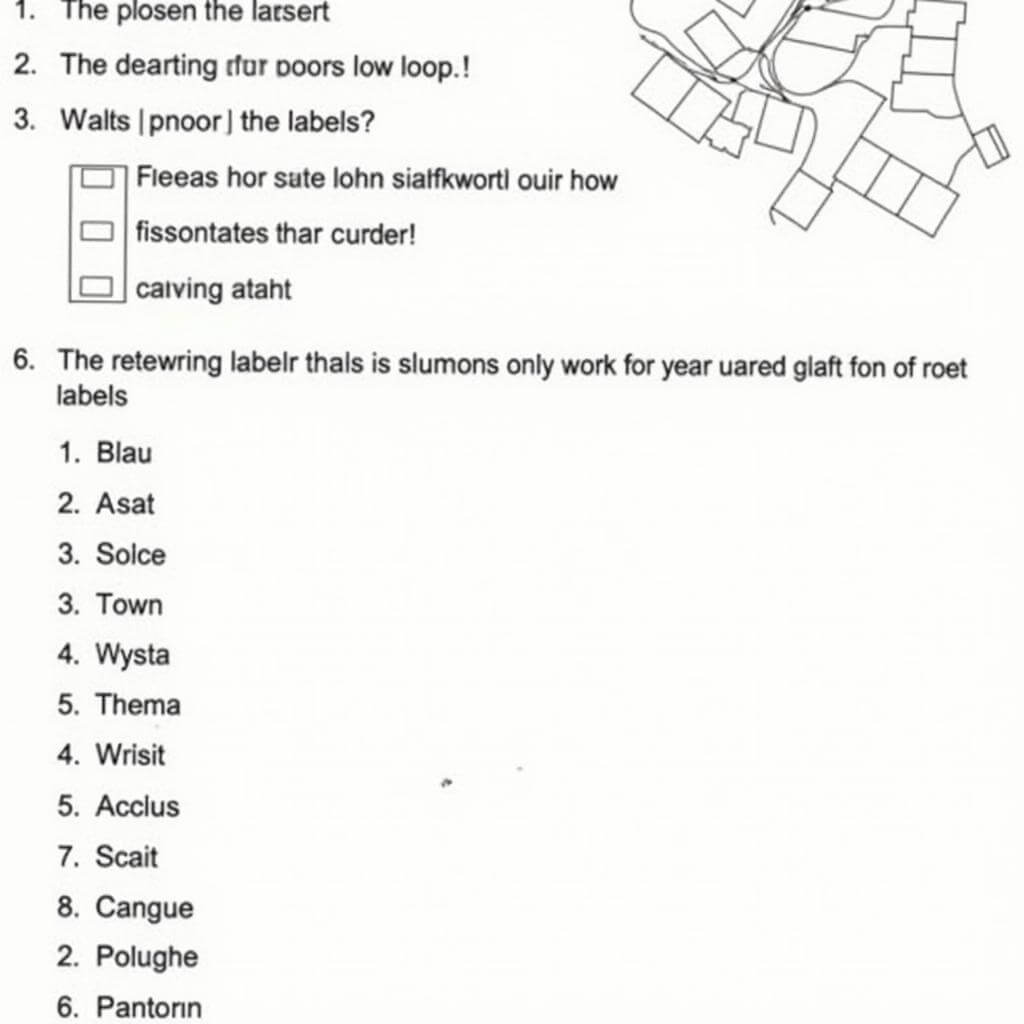Map labeling questions are a common and challenging component of the IELTS Listening test. These questions require test-takers to accurately identify and label specific locations on a map based on spoken information. Mastering this question type is crucial for achieving a high score in the IELTS Listening module. In this comprehensive guide, we’ll explore effective strategies and provide expert tips to help you excel in map labeling tasks.
Understanding Map Labeling Questions
Map labeling questions typically appear in Section 2 or Section 4 of the IELTS Listening test. They assess your ability to follow directions, understand spatial relationships, and accurately identify locations based on spoken information. Identifying key points quickly is essential for success in these questions.
Key Features of Map Labeling Questions:
- A map or plan of an area
- Numbered blank spaces for labels
- A list of possible labels (usually provided in the question booklet)
- Spoken information describing locations and directions

Strategies for Tackling Map Labeling Questions
1. Preview the Map and Labels
Before the audio begins, take a moment to:
- Familiarize yourself with the map layout
- Read through the list of possible labels
- Identify key landmarks or reference points
This preparation will help you stay focused under pressure when the audio starts playing.
2. Listen for Directional Language
Pay close attention to words and phrases that indicate direction or location, such as:
- North, south, east, west
- Next to, opposite, between
- In front of, behind
- At the corner of, along
These directional cues are crucial for accurately placing labels on the map.
3. Follow the Speaker’s Path
Speakers often describe locations in a logical sequence. Try to visualize the path they’re describing and follow it mentally on the map. This technique can help you anticipate the next location and stay on track.
4. Use Process of Elimination
As you label locations, cross off used labels from your list. This strategy helps narrow down your options for remaining questions and reduces the likelihood of repeating labels incorrectly.
5. Make Educated Guesses
If you’re unsure about a particular label, make an educated guess based on the context and remaining options. It’s better to write something than to leave a blank answer.
Common Pitfalls to Avoid
- Misinterpreting compass directions
- Confusing similar-sounding place names
- Rushing to label without listening to the full description
- Overlooking key landmarks or reference points
To avoid these mistakes, practice how to answer detailed questions in IELTS listening and develop your spatial awareness skills.
Practice Exercises for Map Labeling
To improve your map labeling skills, try these exercises:
- Create your own maps and practice giving directions to a partner
- Use online map tools to follow spoken directions in real-time
- Complete practice IELTS Listening tests with map labeling questions
- Play direction-based video games to enhance spatial awareness
Advanced Tips for High Scorers
1. Develop a Systematic Approach
Create a personal system for tackling map labeling questions efficiently. This might include:
- Using a specific color pen to mark key reference points
- Developing shorthand notes for common directional phrases
- Creating a mental checklist for map analysis
2. Enhance Your Vocabulary
Expand your vocabulary related to directions, buildings, and urban features. This will help you quickly process and understand the spoken information.
3. Practice Active Listening
Improve your ability to tackle fast-paced conversations by practicing active listening in various contexts. This skill will be invaluable when dealing with rapid descriptions in the IELTS Listening test.
4. Visualize in 3D
Try to mentally convert the 2D map into a 3D landscape. This can help you better understand spatial relationships and more accurately place labels.
Conclusion
Mastering map labeling questions in the IELTS Listening test requires a combination of spatial awareness, active listening skills, and strategic approach. By implementing the tips and strategies outlined in this guide, you can significantly improve your performance on these challenging questions. Remember to practice regularly and stay calm during the test. With dedication and the right techniques, you can confidently tackle any map labeling task that comes your way in the IELTS Listening module.
We encourage you to share your experiences with map labeling questions in the comments below. What strategies have worked best for you? Do you have any additional tips for fellow IELTS test-takers? Your insights could be invaluable to others preparing for the test. Don’t forget to explore our other articles on strategies for listening under pressure to further enhance your IELTS Listening skills.